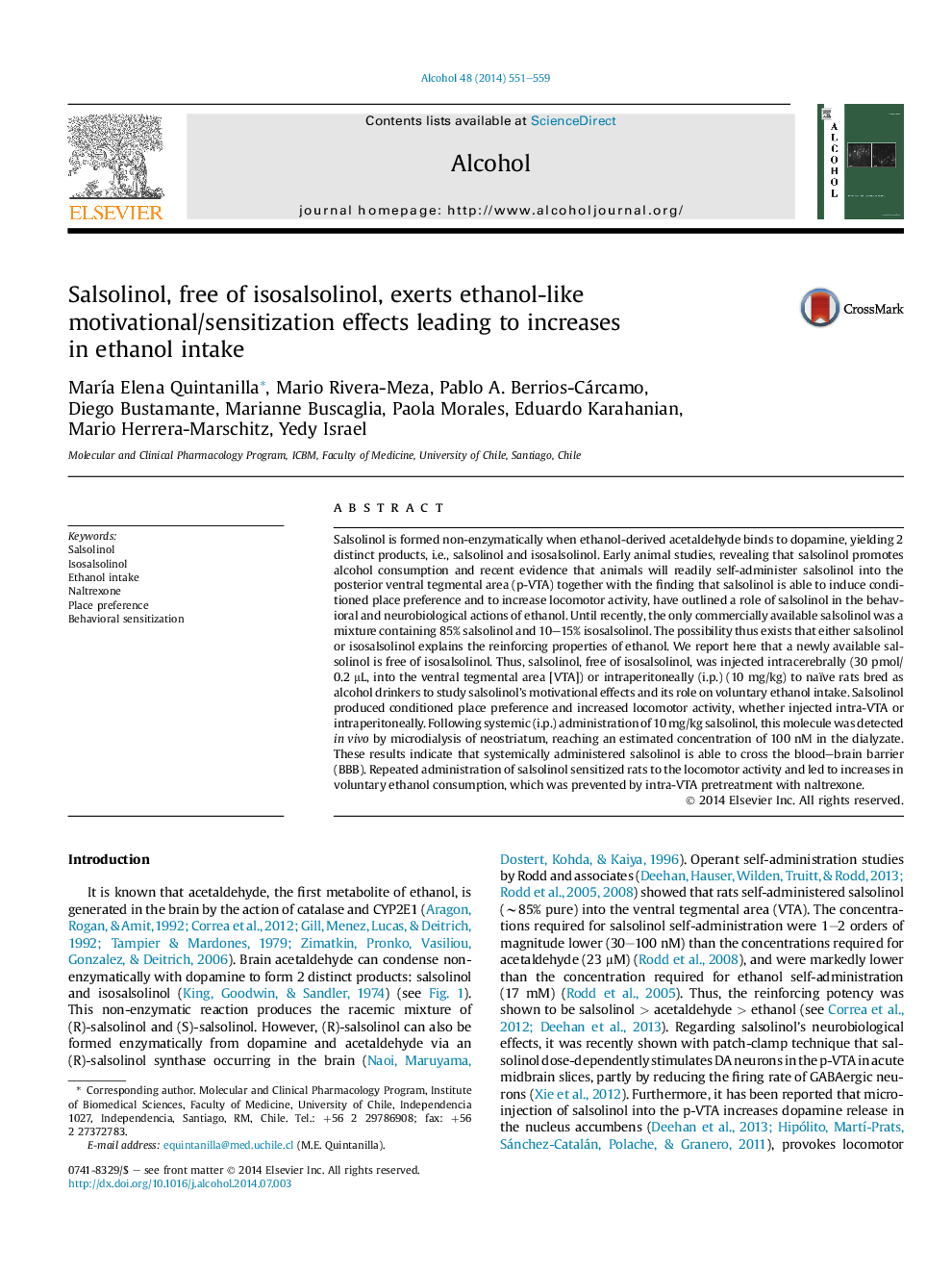| کد مقاله | کد نشریه | سال انتشار | مقاله انگلیسی | نسخه تمام متن |
|---|---|---|---|---|
| 1067037 | 948865 | 2014 | 9 صفحه PDF | دانلود رایگان |

Salsolinol is formed non-enzymatically when ethanol-derived acetaldehyde binds to dopamine, yielding 2 distinct products, i.e., salsolinol and isosalsolinol. Early animal studies, revealing that salsolinol promotes alcohol consumption and recent evidence that animals will readily self-administer salsolinol into the posterior ventral tegmental area (p-VTA) together with the finding that salsolinol is able to induce conditioned place preference and to increase locomotor activity, have outlined a role of salsolinol in the behavioral and neurobiological actions of ethanol. Until recently, the only commercially available salsolinol was a mixture containing 85% salsolinol and 10–15% isosalsolinol. The possibility thus exists that either salsolinol or isosalsolinol explains the reinforcing properties of ethanol. We report here that a newly available salsolinol is free of isosalsolinol. Thus, salsolinol, free of isosalsolinol, was injected intracerebrally (30 pmol/0.2 μL, into the ventral tegmental area [VTA]) or intraperitoneally (i.p.) (10 mg/kg) to naïve rats bred as alcohol drinkers to study salsolinol's motivational effects and its role on voluntary ethanol intake. Salsolinol produced conditioned place preference and increased locomotor activity, whether injected intra-VTA or intraperitoneally. Following systemic (i.p.) administration of 10 mg/kg salsolinol, this molecule was detected in vivo by microdialysis of neostriatum, reaching an estimated concentration of 100 nM in the dialyzate. These results indicate that systemically administered salsolinol is able to cross the blood–brain barrier (BBB). Repeated administration of salsolinol sensitized rats to the locomotor activity and led to increases in voluntary ethanol consumption, which was prevented by intra-VTA pretreatment with naltrexone.
Journal: Alcohol - Volume 48, Issue 6, September 2014, Pages 551–559